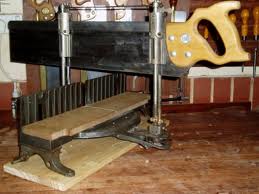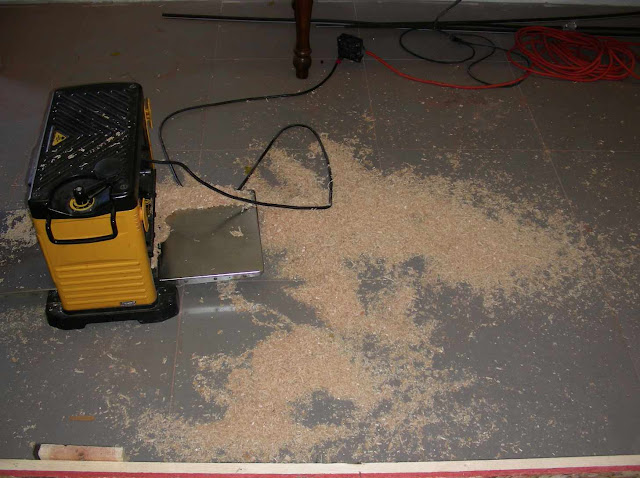I’m all for holding landlords accountable when they screw up and goodness knows in the landlord-tenant relationship, mistakes are sometimes made. But for complaints to be truly heard it helps to be evenhanded and give credit where it’s due, too.
So in a moment of expansive holiday spirit I ask ClockTowerTenants….
“Have you really looked at those gorgeous doors
on the ClockTowerSalon yet?
Wow.
Just beautiful. So how DO we get from here….
To here…
To here?
Glad you asked. lol After the brickwork is completed measurements are taken and then it starts with a good drawing and filing for Landmarks approval.
I hope that’s not blood on the blueprint but I wouldn’t be surprised. Construction isn’t pretty.
The tools are sharp and dangerous, too. Mitreboxes have been around for centuries in one form or another.
But imagine if an old-school mitrebox and a modern electric circular saw got together and made a linevoltage-lovechild.
That thumb-treatening spawn would look something like this:
Properly known as a “motorized mitrebox saw” and widely referred to as a “chopbox”, this brute cuts perfect angles through practically anything with startling power and precision.
Another tool used in the doorhanging process is the woodplane.
These quaint devices---around in America since colonial times--- shave thin layers from a piece of wood to reduce thickness. Long ago a giant, powered shopversion was born.
THEIR lovechild would look something like this:
With all the power of that monster shop tool but the lift-and-carry portability of our little handplane, these terrifying machines revolutionized cabinet work by bringing powerplane capability to the jobsite. Just don’t put your hand in there.
Our new wooden doors were handcrafted to precise specifications not only to fit the ClockTower custom openings but also to meet Landmarks approval with a design that replicates a historical appearance. These doors, two sets, are finished to a near automotive level of paint finish and appropriately, cost just about as much as a new car. They are even custom-crated for shipping protection, with layers of foam sheeting to protect from scratches, clear plastic for a water shield and then wrapped in a wooden crate.
First, we need to install the door frame, the header and both jambs.
Brickwork may be accurate but it’s not nearly accurate enough. Perfection is essential if a door is to swing and seal properly. The doorframe must be placed within the opening and then “shimmed into plumb”, perfectly straight up and down relative to the earth.
Most doors swing on two hinges. Heavy doors can often receive a third one in the center for stability. These extraordinary doors will receive five hinges each, that’s right Five, a mark of very high quality guaranteed to all-but eliminate warping in bad weather conditions. Care taken at this point pays real dividend later on.
But once the frame is installed and perfectly plumb, level and square? Now it’s easy. Just screw the hinges into the factory mortises with the screws the manufacturer provides and then install the pull, the weatherstripping and the locking hardware.
Voilá. And well done.
Plane, saw and mitre photos found on the web and used without permission.




















No comments:
Post a Comment